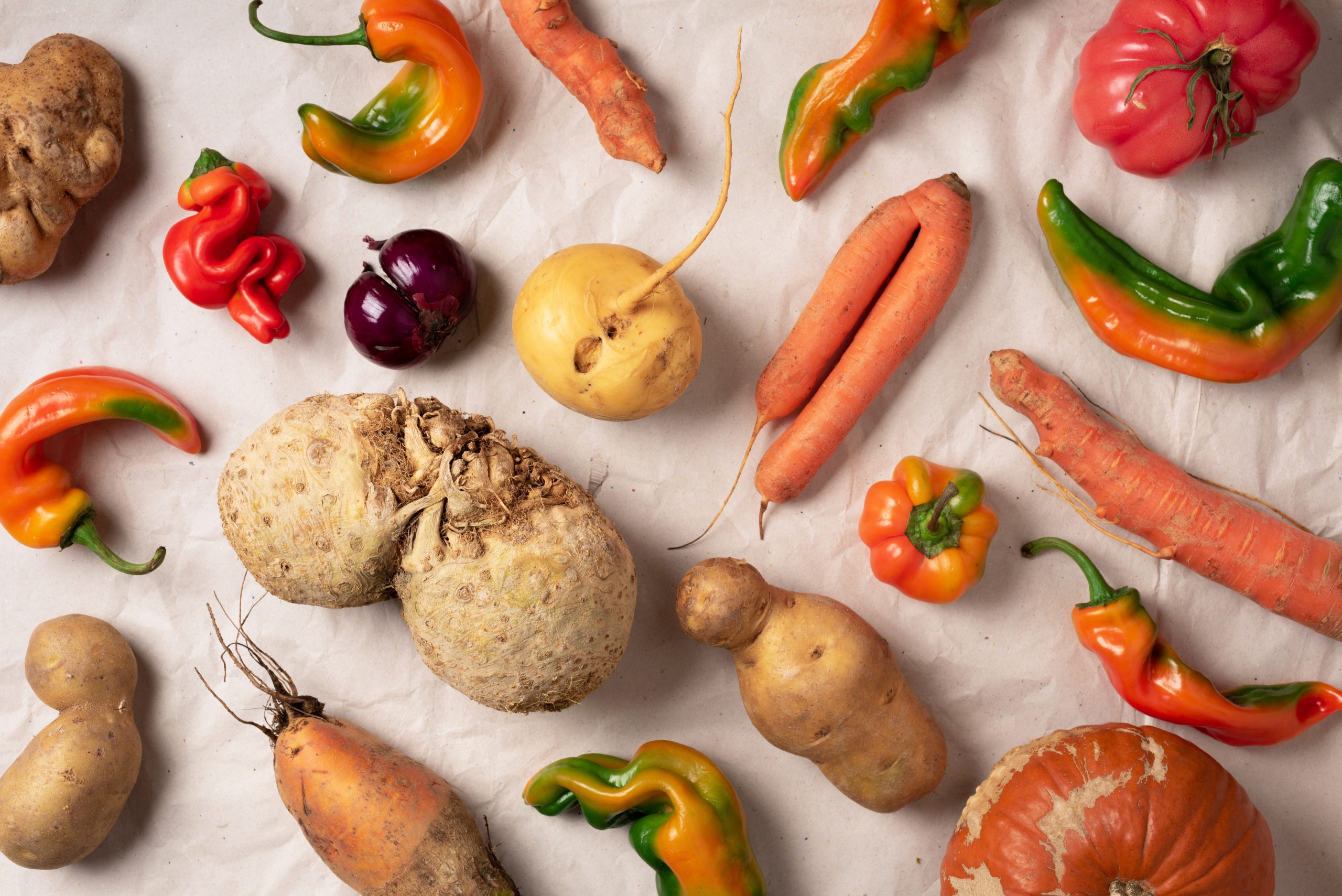When you walk through the produce section of a grocery store, it’s easy to be drawn to the perfectly shaped apples, blemish-free tomatoes, and vibrant greens. But what happens to the fruits and vegetables that don’t quite fit these standards? Sadly, millions of tons of produce are discarded yearly simply because they don’t meet the aesthetic criteria set by retailers. These “ugly vegetables and fruits” may not be pretty, but they are just as nutritious, delicious, and valuable as their more attractive counterparts.
In recent years, a growing movement has emerged encouraging people to embrace imperfect fruits and vegetables. Not only does this help reduce food waste, but it also challenges the idea that appearance is what makes produce desirable. Let’s explore why ugly produce deserves a spot in your kitchen and how it can benefit the environment and your health.
The Ugly Produce Problem
The problem with ugly vegetables and fruits starts long before they hit the grocery store. Much of the produce that doesn’t meet strict cosmetic standards never makes it that far. Farmers often have to discard crops that are misshapen, scarred, or slightly discolored, even though they’re perfectly safe to eat. This leads to a significant amount of food waste before the produce is even harvested.
Once the produce reaches stores, the issue continues. Shoppers are conditioned to pick the brightest, most uniform produce, leaving the less attractive options behind. This leads to even more waste, as unsold fruits and vegetables are thrown out. The result? An enormous amount of food is wasted based purely on its appearance, rather than its nutritional value or taste.
Why Ugly Fruits and Vegetables Are Just as Good
The truth is, ugly vegetables and fruits are just as nutritious and delicious as their more polished counterparts. In fact, in many cases, their imperfections are only skin-deep. That crooked carrot, lumpy potato, or bruised apple still provides the same vitamins, minerals, and flavors as any other.
Nutritional Value
There is no difference in the nutritional content of ugly produce versus perfect produce. A bumpy cucumber has the same hydrating and vitamin-rich qualities as a smooth one. That scarred tomato is still bursting with antioxidants like lycopene, and the knobby sweet potato is just as loaded with fiber and vitamins A and C as its prettier twin.
In fact, many nutritionists argue that ugly vegetables and fruits are often grown by smaller farmers or those who practice more sustainable farming, and they may even be fresher or have higher nutritional value. Rather than being bred for appearance, these crops are typically grown for flavor and quality.
Taste and Texture
If you’ve ever passed up a strange-looking fruit for a picture-perfect one, you might be surprised that the taste and texture can be identical. Sometimes, ugly produce can even taste better because it’s grown for quality rather than looks. For example, heirloom varieties of tomatoes may have uneven shapes or unusual colors, but they often offer a more intense, rich flavor than uniform supermarket varieties.
Moreover, certain imperfections, like a slightly bruised or soft spot, can be easily removed without affecting the rest of the produce. Learning to look past these minor blemishes can open up a world of new flavors and textures, especially if you prioritize how food tastes over how it looks.
Reducing Food Waste by Embracing Ugly Produce
One of the most compelling reasons to embrace ugly vegetables and fruits is its impact on reducing food waste. The statistics surrounding food waste are staggering. Globally, one-third of all food produced is wasted, and much of that waste comes from discarding produce that doesn’t meet aesthetic standards.
Environmental Benefits
Food waste isn’t just a moral issue; it’s an environmental one. When food is wasted, all the resources that went into growing, harvesting, and transporting that food are also wasted. This includes water, land, labor, and energy. To put it into perspective, food production accounts for roughly 25% of global greenhouse gas emissions, and wasted food contributes significantly.
You can help reduce this waste by buying and eating ugly vegetables and fruits. Less produce will be discarded at the farm level, less energy will be wasted in transporting unsold produce, and fewer resources will be wasted on growing food that is never eaten. Embracing imperfect produce is a small but meaningful way to reduce your environmental footprint.
Economic Benefits
In addition to helping the environment, choosing ugly produce can be more economical for consumers. Ugly fruits and vegetables are often sold at a lower price simply because they look less appealing. This means you can get fresh, high-quality produce at a discount, helping you stretch your grocery budget further.
For farmers, selling ugly produce offers a way to recoup some of the costs associated with growing food. Instead of discarding perfectly good crops, they can sell them at a reduced rate, supporting both the farmers and consumers in a more sustainable food system.
How to Use Ugly Vegetables and Fruits in Your Kitchen
You don’t need to be a professional chef to work with ugly vegetables and fruits. With a little creativity, you can easily incorporate them into your everyday meals, minimizing waste and enjoying delicious results.
Cooking and Blending
One of the easiest ways to use imperfect produce is in dishes where appearance doesn’t matter. Soups, stews, and stir-fries are perfect for using up slightly misshapen or bruised vegetables. Once they’re chopped and cooked, you won’t even notice the imperfections. Similarly, a bit overripe or blemished fruits can be blended into smoothies, sauces, or baked goods without sacrificing taste.
Pickling and Preserving
Ugly vegetables and fruits are also great candidates for pickling, preserving, or canning. A bruised tomato might not be appealing to slice for a salad, but it’s perfect for making a flavorful tomato sauce or salsa. Similarly, cucumbers with cosmetic flaws can still make crunchy and delicious pickles.
Get Creative with Presentation
For those who enjoy getting creative in the kitchen, you can embrace the unique shapes and sizes of ugly produce. Use quirky carrots or oddly shaped bell peppers to add character to your dishes. It’s a fun way to add some personality to your meals while reducing food waste.
Conclusion
It’s time to rethink how we view produce. Appreciating ugly vegetables and fruits is more than saving money; it’s about valuing food for what it brings to the table regarding nutrition, flavor, and sustainability. By buying imperfect produce, you’re making a small but significant impact on the fight against food waste, supporting farmers, and enjoying all the delicious benefits of it. Next time you’re in the grocery store, take a second look at those funny-looking fruits and vegetables—they just might surprise you.



